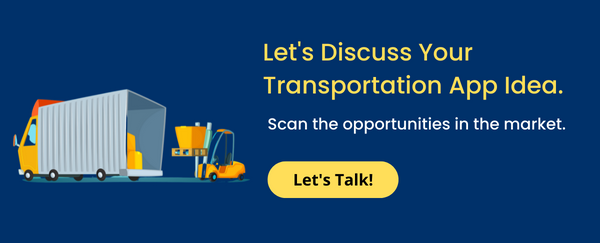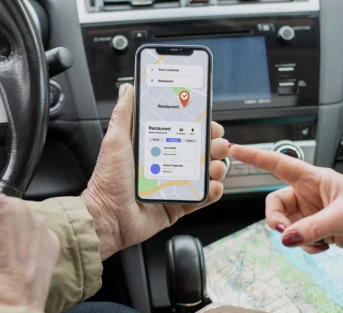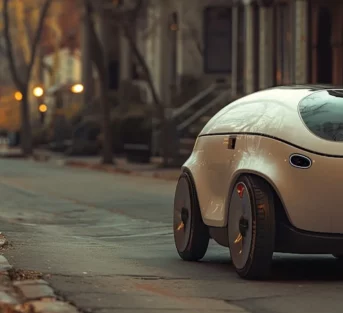Ride sharing apps like Uber have revolutionized the way we travel, transforming traditional taxi services into a fast and convenient mobile experience. Among these, Uber stands as a pioneer, setting new standards for ride hailing services. But, how does one create an app like Uber? This article covers every aspect from understanding Uber’s business model to the technicalities involved in developing a similar app.
How Does Uber App Work?
Before we delve into the technicalities of developing an app similar to Uber, it’s essential to understand how the Uber app operates. The Uber app primarily consists of two separate apps: one for riders and another for drivers, both of which are managed and monitored via an admin panel.
From a user’s perspective, the Uber app works in five simple steps:
Request a Ride: The user inputs their destination and selects the type of vehicle they prefer. The app then provides an estimated fare.
Confirm Details: The user verifies their pickup location and confirms other details of the ride.
Driver Matching: The app connects the user to a nearby driver. The driver can either accept or decline the ride request.
Automatic Payment: Once the ride is completed, the payment is automatically processed through the app using the payment method chosen by the user.
Rating and Review: After the ride, the user rates the driver and provides any necessary feedback.
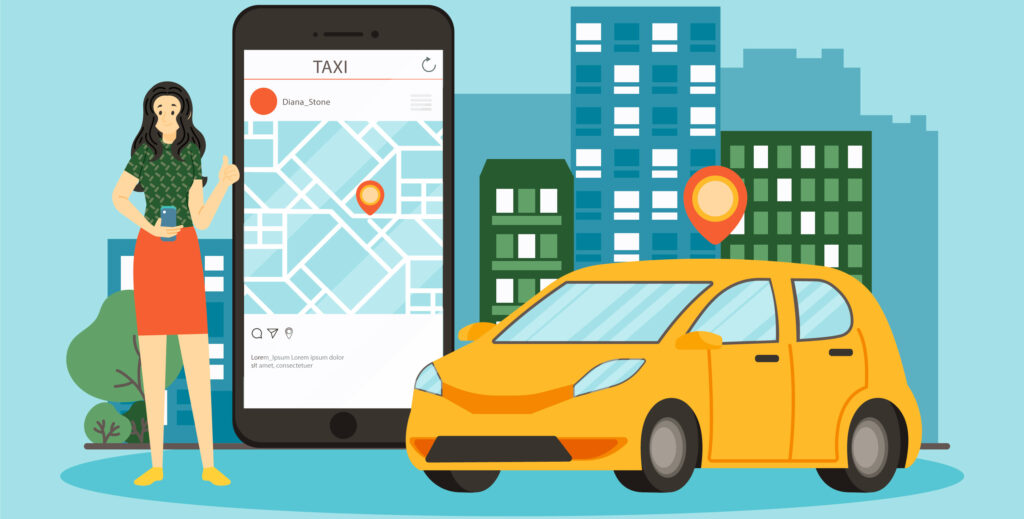
The revenue model of ride sharing apps like Uber
They primarily leverage four revenue models:
| Commission-Based Model | This is the most common model. The platform charges a commission for each ride, typically between 20% to 25% of the total fare. This model allows the company to generate regular income without owning any vehicles. |
| Surge Pricing Model | During peak hours or when demand exceeds supply, platforms like Uber increase their fare prices. This model, known as surge pricing or dynamic pricing, allows them to balance demand and supply while earning extra revenue. |
| Subscription Model | In this model, consumers pay a monthly or annual fee for unlimited or discounted rides. This ensures a steady revenue stream and encourages customer loyalty. Uber’s Ride Pass is an example of this model. |
| Advertising Model | Some ride sharing platforms earn revenue by offering advertising space within their app. They may also partner with local businesses for in-ride promotions or directed advertising based on the user’s ride history and preferences. |
Each model has its own advantages and disadvantages. The commission-based model, while consistent, may discourage drivers due to the high fees. Surge pricing can lead to customer dissatisfaction if prices become too high. The subscription model requires a large user base and regular usage to be profitable. Finally, the advertising model may intrude on the user experience if not implemented carefully
Key Components of an App like Uber
The development of a ride sharing app like Uber involves creating two distinct apps (for drivers and passengers) with their interconnected functionality controlled via an admin panel. Let’s explore the essential features of each part of the service.
Core Features for Passengers
The Uber app for passengers primarily includes features such as:
| Registration | Users can sign up using their email, Facebook, or phone number. |
| Taxi Booking | Users can input their pickup and destination locations and select the type of car they want. |
| Fare Calculator | Users can get an estimate of their ride fare before booking. |
| Driver Tracking | Users can track the driver’s location in real time. |
| Payment Options | Users can choose from various payment methods including credit/debit cards, PayPal, or cash. |
| Push Notifications | Keeps passengers informed about their ride status, driver details, etc. |
| Messaging | Allows users to message their driver through the app. |
| Driver Rating & Review | Users can rate their rides and provide feedback about the driver and the service. |
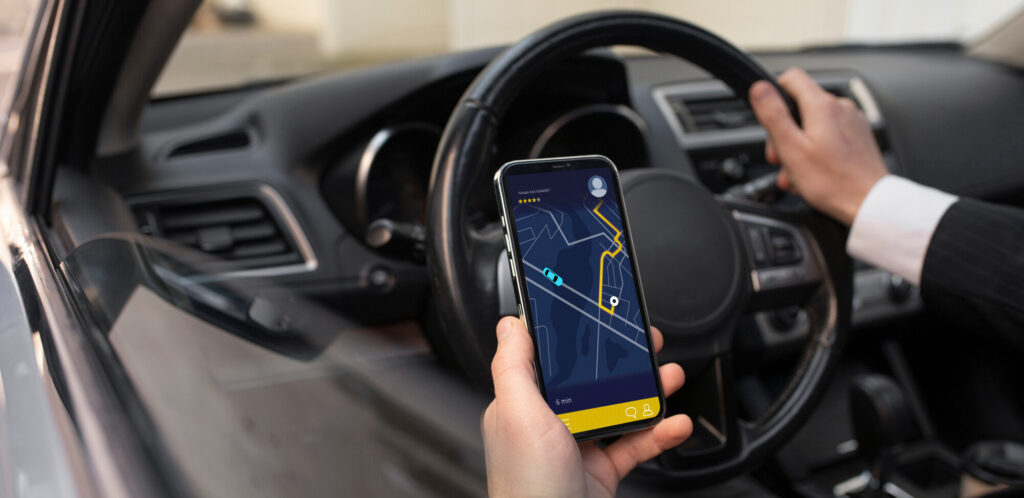
Basic Features for Drivers
While some features in the driver’s app are similar to the passenger’s app, there are also unique features such as:
| Driver Profile & Status | The app includes a verification process for drivers and displays their availability status. |
| Trip Alert | Drivers receive trip requests with information about the passenger’s location, route, and travel history. |
| Navigation & Route Optimization | The app provides drivers with the best route to the passenger’s location and then to their destination. |
| Driver Delivery Reports | Drivers can access statistical information about their trips and earnings. |
Admin Panel for Effective Management
A web-based admin panel is essential for managing customers, drivers, locations, payments, and other business processes. Key functions within the admin panel include:
| Locations & Fares Management | Setup and manage fares for various on-demand ride sharing services based on cities, vehicle type, hourly rates, surges. |
| Driver & User Management | Manage all cab drivers on your custom taxi booking app and accept or reject taxi drivers that register on the Karry driver application. |
| Vehicle Management | Manage your fleets and fleet registrations, renewals etc. |
| System Content Management | Special zones can be created by the admin from the admin panel for certain areas and the prices and pickup points can differ. |
| Promotions & Discounts Management | The admin has the option to run campaigns in the backend for the customers to avail discounts based on set conditions. |
| Driver & User Support | Provide support for the drivers running your fleet of vehicles, and for the customers. |
Technology Stack Required to Develop an Uber-Like App
One significant factor that differentiates Uber from traditional taxi services is its use of technology. Implementing the right technology stack is crucial when developing an app like Uber. Some key technologies involved include:
| Geolocation & Routing | CoreLocation and MapKit frameworks for iOS, and Google Location Services API and Google Maps Android API for Android. |
| Push Notification & Messaging | Apple Push Notifications Service (APN) and Twilio for iOS, and Firebase Cloud Messaging (FCM) and Twilio for Android. |
| Payment Gateway Integration | Braintree, Stripe, PayPal, Apple Pay, Google Wallet, etc. |
| Schedule a Ride in Advance | A library like Sidekiq in Rails or similar analogs for other platforms. |
| Ride Cost Estimation | A complex algorithm that calculates the total cost based on initial cost, cost per km, and driver availability factor. |
Creating an App Like Uber: Step-by-Step Process
The process of creating an app like Uber involves several crucial steps:
- Develop a Business Model: Identify market demand for your app and design a suitable business model.
- Identify Target Audience: Define your key target audience and develop your app according to their needs.
- Define Unique Selling Points (USPs): Determine what makes your app unique and necessary.
- Determine Basic Features: Identify the essential features your app requires and decide on the platforms for the application.
- Hire a Mobile App Development Team: A skilled development team with extensive experience is crucial for your app’s success.
During the app development process, it’s important to continuously gather user feedback and make necessary adjustments. Remember, developing an app like Uber is a long-term commitment.
The Cost of Developing an app like Uber
The cost of developing an app like Uber varies greatly depending on factors such as the number of features, design aspects, platforms, technology preferences, and the development team’s capabilities, location, and rates.
| Type of App | Development Duration | Cost |
| Simple Ride Sharing App | 5 to 7 months | $30,000 to $60,000 |
| Complex Ride Sharing App | 7 to 11 months | $60,000 to $120,000 |
| Full-featured Ride Sharing App | 12 to 18 months | $120,000 to $ 400,000 |
It’s important to note that these costs don’t include business analysis, project management, quality assurance, and other indirect business costs. Therefore, it’s advisable to consult with a professional software development company to get a more precise estimate.
Conclusion
Creating a ride sharing app like Uber is a strategic move that capitalizes on the success of the on-demand service model. With features such as geolocation, push notifications, and seamless payment integration, these apps address significant pain points in the taxi-booking process.
If you’re looking to tap into this thriving market, Appscrip’s Uber clone app development solutions are your ideal choice. Our seasoned team of developers is at the forefront of innovation, ensuring your app is a unique product that stands out in the market. Contact Appscrip today and let us help you build your successful ride sharing app.
